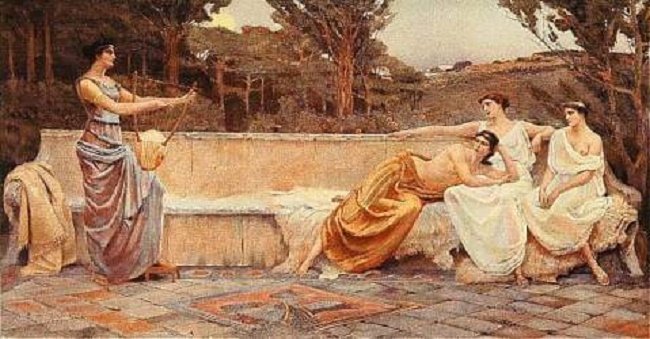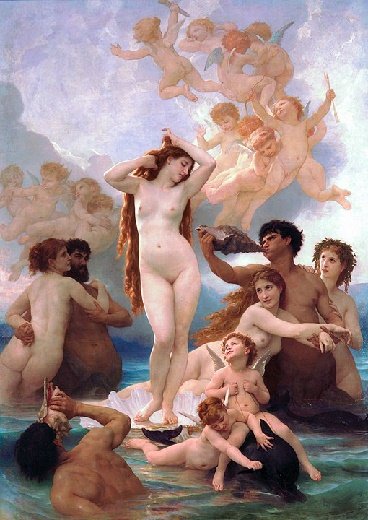A propósito de la poetisa Safo, la amistad y el amor | On the poetess Sappho, friendship and love
ESP.
Safo es la poetisa más antigua del mundo occidental. Nació en la isla griega de Lesbos, alrededor de los años 650-610 a.C. Poco se sabe de la vida de Safo. Se conjetura que dirigía un grupo de amigas dedicado al culto a la diosa Afrodita (Casa de las servidoras de la Musa), jóvenes que se dicaban a la poesía y el canto, interpretado con el instrumento de cuerdas llamado lira (de allí lo de “lírica”), y a los preparativos de la celebración de la divinidad. Fue considerada por Platón como la Décima musa.
ENG.
Sappho is the oldest poetess in the Western world. She was born on the Greek island of Lesbos, around 650-610 B.C. Little is known about Sappho's life. It is conjectured that she led a group of friends dedicated to the cult of the goddess Aphrodite (House of the servants of the Muse), young women who were dedicated to poetry and singing, performed with the stringed instrument called lyre (hence "lyric"), and to the preparations for the celebration of the divinity. She was considered by Plato as the Tenth Muse.

Fuente / Source - Dominio público | Public Domain
El acceso a su obra poética ha sido muy limitado; solo a través de algunos papiros y referencias indirectas. Al parecer lo escrito por ella estaba en la Biblioteca de Alejandría, pero fue ordenada su quema por el papa Gregorio VII bajo la condena de inmoralidad.
Su poesía, de una belleza y delicadeza únicas, ronda en torno a la temática amorosa (deseo, celos, nostalgia, desengaños, etc.), donde entraría tanto la amistad con la diosa como con sus devotas.
Algunos fragmentos de su poesía lírica, amorosa:
…yo te buscaba y llegaste,
y has refrescado mi alma que ardía de ausencia.
Salía la luna y ellas
en torno al altar en pie quedaron.
Las Pléyades ya se esconden,
la luna también, y media
la noche, las horas pasan,
y voy a acostarme sola.
A continuación un ensayo mío acerca de uno de sus poemas dedicado a Afrodita.
Access to her poetic work has been very limited; only through some papyri and indirect references. It seems that her writings were in the Library of Alexandria, but were ordered to be burned by Pope Gregory VII under the condemnation of immorality.
Her poetry, of a unique beauty and delicacy, revolves around the theme of love (desire, jealousy, nostalgia, disappointment, etc.), which would enter both friendship with the goddess and with her devotees.
Some fragments of his lyrical, amorous poetry:
...I was looking for you and you came,
and you have refreshed my soul that burned with absence.
The moon rose and they
and you have refreshed my soul that burned with absence.
The Pleiades are already hiding,
the moon too, and half
the night, the hours pass,
and I go to bed alone.
Below is an essay of mine about one of his poems dedicated to Aphrodite.

Desde Creta ven, Afrodita, aquí
a este sacro templo, que un bello bosque
de manzanos hay, y el incienso humea
ya en los altares.Aquí el agua fresca murmura por las ramas
de los manzanos, y las rosas dan al lugar su sombra,
y un profundo sueño de aquellas hojas
trémulas baja.Aquí el prado donde pacen los caballos
ya está lleno de flores de primavera
y las brisas soplan oliendo a miel…Ven, Chipriota, aquí, coronada de guirnaldas,
para verter alegremente en nuestras copas de oro
el néctar para escanciarlo
en nuestros festejos.
***
From Crete come, Aphrodite, here
to this sacred temple, that a beautiful forest
of apple trees is there, and the incense smokes
Already on the altars.Here the cool water murmurs through the branches
Of the apple trees, and the roses give the place their shade,
and a deep sleep of those leaves
shadows, and a deep sleep of those
trembling leaves descends.Here the meadow where the horses graze
is already full of spring flowers
And the breezes blow, smelling of honey...Come, Cypriot, here, crowned with garlands,
to pour merrily into our golden goblets
the nectar to pour it
at our feasts.
Nota: hice una combinación de la traducción de Juan Manuel Rodríguez con la de Carlos García (ver Referencias) | I made a combination of Juan Manuel Rodríguez's translation with Carlos García's (see References)

Fuente / Source - Dominio público | Public Domain
I
Este poema se construye por el desarrollo de una descripción narrativa (en el fondo de él algo se narra, a la manera del deseo que habla por debajo del discurso de las cosas) mediante el uso de una palabra sencilla, elemental, casi directa. Se despliega una narración hecha de frases cortas y yuxtapuestas que van configurando un paisaje de sosiego, pero no inerte. Se trata de un ambiente delicado, tal vez pueda decirse “femenino”, que el sonido del silencio habita y colma, acentuado y orlado por las frescas murmuraciones del agua y los susurros de las ramas.
En la composición el lugar capital es ocupado por las imágenes. Ellas lo proveen de una especial existencia que las conforma profundamente: la sensorialidad. Si bien esta es una característica fundamental de la imagen en Safo y de la imagen en general, en este poema presenta un rasgo particular, al cual me referiré.
II
El poema es, como todo hecho poético, un canto esencial, que puede ser visto en tres planos interpenetrados: en primer lugar, es un canto amoroso a Afrodita, diosa del Amor y la Belleza; en segundo lugar, es canto a la belleza de la naturaleza como templo de Afrodita y templo de la Belleza (en tanto sustancia del hecho amoroso y pleno); y en tercer lugar, un canto al regocijo que esta produce en el espíritu (la alegría) que ella –la Belleza– sustenta.
III
Una celebración tiene lugar. La naturaleza: la belleza: el amor: la alegría. Esos son los motivos y componentes de esa ceremonia cantada, recitada, es decir, reactualizada, como todo rito.
Una celebración es cantada como culto a la belleza-naturaleza y culto al amor-alegría. Pero también el poema, la poetisa, celebra. Afrodita es el celebrante en el poema, Safo celebra con el poema.
Así, la celebraciones rito mítico y rito amoroso que se unen en otro acto celebratorio: el poema. En él se deslizan, el uno en el otro.
Y la celebración de la belleza se consuma de un modo especial: regocijo de los sentidos. Todos los sentidos (toda la sensorialidad: lo visual, olfativo, auditivo, gustativo y táctil) van haciendo su aparición, protagonizan segmentariamente su escena en ese paisaje que se construye por la evocación, al nombrar. Las imágenes son la expresión de esa sensorialidad gozosa, mansa y plena, que se crea por la fuerza de un lenguaje sencillo, pero cargado de sentir.
I
This poem is constructed by the development of a narrative description (at the bottom of it something is narrated, in the manner of desire that speaks beneath the discourse of things) through the use of a simple, elementary, almost direct word. A narration made of short and juxtaposed sentences unfolds, configuring a landscape of calmness, but not inert. It is a delicate environment, perhaps it could be said "feminine", that the sound of silence inhabits and fills, accentuated and bordered by the fresh murmurings of water and the whisperings of the branches.
In the composition the capital place is occupied by the images. They provide it with a special existence that profoundly shapes it: sensoriality. Although this is a fundamental characteristic of the image in Sappho and of the image in general, in this poem it presents a particular feature, to which I will refer.
II
The poem is, like all poetic fact, an essential song, which can be seen in three interpenetrated planes: first, it is a love song to Aphrodite, goddess of Love and Beauty; second, it is a song to the beauty of nature as a temple of Aphrodite and temple of Beauty (as the substance of the loving and full fact); and third, a song to the joy that this produces in the spirit (joy) that she -Beauty- sustains.
III
A celebration takes place. Nature: beauty: love: joy. These are the motives and components of this ceremony, sung, recited, that is to say, re-actualized, like any rite.
A celebration is sung as a cult of beauty-nature and a cult of love-joy. But also the poem, the poetess, celebrates. Aphrodite is the celebrant in the poem, Sappho celebrates with the poem.
Thus, the mythical rite and love rite celebrations that unite in another celebratory act: the poem. In it they slip, one into the other.
And the celebration of beauty is consummated in a special way: rejoicing of the senses. All the senses (all the sensoriality: visual, olfactory, auditory, gustatory and tactile) make their appearance, segmentally starring their scene in that landscape that is built by evocation, by naming. The images are the expression of that joyful, gentle and full sensoriality, created by the strength of a simple language, but full of feeling.
Referencias | References:
Safo (1998). Traducción: Juan Manuel Rodríguez T. España: Edit. Grijalbo Mondadori.
Antología de la poesía lírica griega – Siglos VII-IV a.C.. Traducción: Carlos García Gual. (1980). España: Alianza Editorial.
https://es.wikipedia.org/wiki/Safo_de_Mitilene
https://en.wikipedia.org/wiki/Sappho

Gracias por su lectura | Thank you for reading.





https://twitter.com/1584249800207253506/status/1626402496389292032
The rewards earned on this comment will go directly to the people sharing the post on Twitter as long as they are registered with @poshtoken. Sign up at https://hiveposh.com.
Excelente interpretación de tan bello poema. La naturaleza, el amor y la alegría protagonistas en aquellos versos sublimes, como el amanecer en un equinoccio veraniego.
Gracias por compartirnos tan bella pieza de la antigüedad.
Excelente noche.
Agradecido por tu lectura atenta, @rinconpoetico7. Saludos.